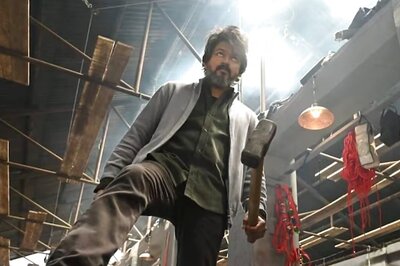
views
Self-driving cars are a huge focus within the automobile industry, with more manufacturers testing their latest offerings but those tests are largely in cities and areas that have been mapped out in 3D. But what if there were another way, one that would lead them down the country roads? At the moment, self-driving vehicles are heavily relying on maps, such as Google's, which have great 3D detailing in regards to the whereabouts of lanes, turns, street signs etc. However, such systems don't help someone wanting to travel out into the unmapped countryside.
That's where Daniela Rus, director of MIT's Computer Science and Artificial Intelligence Laboratory (CSAIL), and colleagues come in. The team has developed MapLite, a system designed to tackle navigating without these 3D maps. MapLite does use GPS data that you'd find on Google Maps for a rough estimate of the car's location but the navigation is then determined by sensors.
With a range of Light detection and Ranging sensor (LIDAR) as well as IMU sensors fitted into a Toyota Prius, the team were able to autonomously drive on multiple unpaved roads in the countryside of Massachusetts with the car able to detect the road conditions from 100 feet away.
“The reason this kind of ‘map-less' approach hasn't really been done before is because it is generally much harder to reach the same accuracy and reliability as with detailed maps," says Teddy Ort, CSAIL graduate student in a report on MIT News. “A system like this that can navigate just with on-board sensors shows the potential of self-driving cars being able to actually handle roads beyond the small number that tech companies have mapped."
Also Read: 2018 Maruti Suzuki Vitara Brezza Compact SUV Confirmed With AMT Gearbox, Launch Soon
MapLite trains on data from one set of roads and then tests it on others, rather than relying on machine learning by training, the more common map-less driving approach. However, for the moment the technology is limited to areas without dramatic elevation changes, therefore the Prius won't be climbing any mountains just yet.
“I imagine that the self-driving cars of the future will always make some use of 3D maps in urban areas," says Ort. “But when called upon to take a trip off the beaten path, these vehicles will need to be as good as humans at driving on unfamiliar roads they have never seen before. We hope our work is a step in that direction."
Don't Forget to Subscribe to the 'Tech And Auto Show' YouTube Channel
The team and their project, in part supported by the National Science Foundation and the Toyota Research Initiative, aspires to “have their system reach comparable levels of performance and reliability as mapped systems but with a much wider range" reports MIT News.


















Comments
0 comment